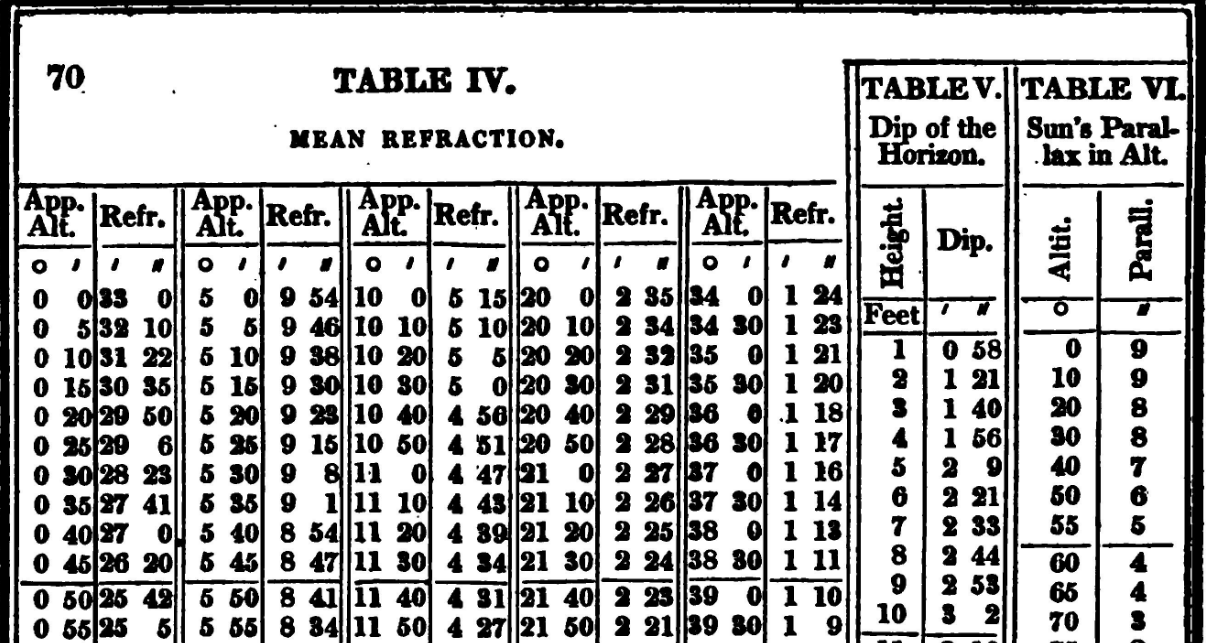I'm just the most amateur of amateur astronomers and only know the basics.
I think where you're getting confused is in scale. A brick wall that's out of level by 18 inches would be a horrible bit of work.
But think about scale. Eighteen inches across three miles is a tiny error in proportion.
Nope, I understand scale.
+- 18 inches at a distance of three miles where earths' drop is 72 inches from where we're doing our observations is significant.
Unless I'm totally mistaken that 72 inch drop in three miles is measured from the astronomical horizon/perpendicular line from earths' radius at sea level is it not?
Please understand, I'm not trying to argue just for arguments sake. As I've said, I'm sure a theodolite is very accurate in measuring angles in surveying at shorter distances than the horizon, and even in longer distances like in astronomy when you have three specific points. Such as your position and two stars. I'm sure the measured angle is pretty accurate.
But in measuring the dip of the horizon, the line of sight/astronomical horizon is dependant upon the accuracy of how level the theodolite is.
We can get a fairly close measurement, but not as accurate as we would be with three exact points.
Again, these are just my thoughts. I completely acknowledge that I could most likely be wrong.
I only have a high school education. Highest math I've had is Algebra 2 and Geometry 1. So when it comes to the math I'm at your mercy.
But I'm not ignorant. Have been tested and IQ is in the 99th percentile.
I understand IQ means little, does not mean that I'm smarter than others in the lower percentiles of IQ, but it does mean I'm able to grasp ideas possibly easier than most.
I haven't mentioned this to brag because I understand that you guys are smarter than I in this. I'm just trying to grasp whether a 6 minute error in three miles is significant or not. To my mind it is and effects accuracy. Though I acknowledge the error might be miniscule for the objective.



